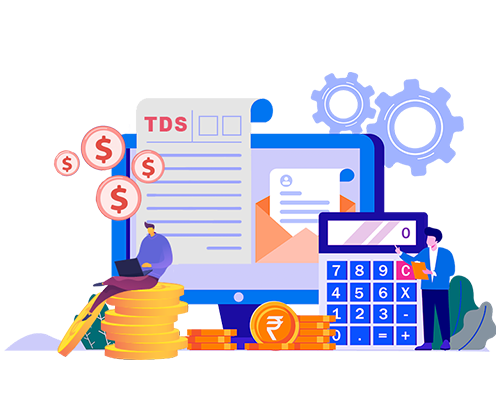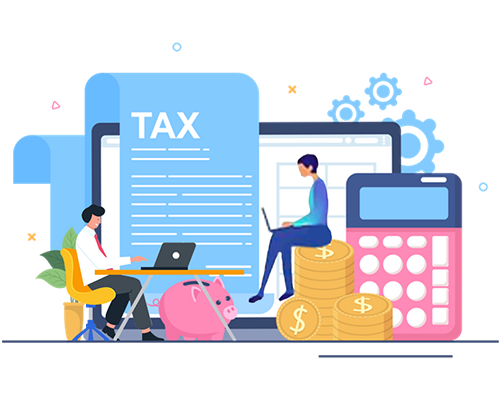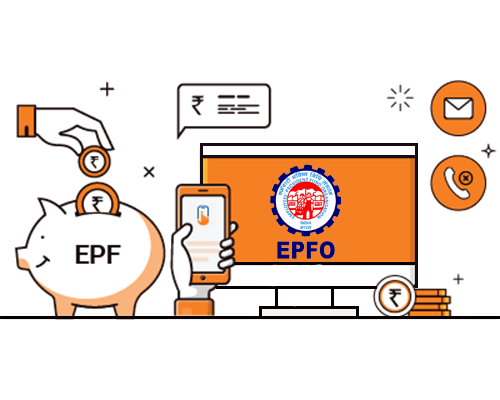|
An interview call letter is a formal communication sent by a company or organization to a job applicant inviting them to attend an interview for a specific position. The letter usually includes details such as the date, time, and location of the interview, the name and position of the interviewer, and any additional instructions or requirements for the interview. The interview call letter is typically sent after a candidate has been shortlisted for an interview, based on their application, resume, or other screening processes. It is an important document that serves as a confirmation of the interview appointment and provides the candidate with the necessary details and instructions to prepare for the interview. The interview call letter may also include information about the company, its values, and the position for which the candidate has applied. It may also mention any documents or materials that the candidate is required to bring to the interview, such as a copy of their resume, educational certificates, or work samples. The interview call letter is usually sent by email or post, and the candidate is expected to confirm their attendance by responding to the letter within a specified time frame. It is important for candidates to read the interview call letter carefully and follow the instructions provided to ensure that they are prepared for the interview and make a positive impression on the interviewer. Read More |
|
Employee onboarding is the process of integrating a new employee into an organization and preparing them to become a productive member of the team. The onboarding process begins with the employee's acceptance of a job offer and continues through their first few weeks or months on the job. Effective onboarding is critical to the success of new employees as it helps to: Make a positive first impression: The onboarding process can help new employees feel welcomed and valued, and create a positive first impression of the organization. Understand company culture: Onboarding helps new employees understand the organization's values, mission, culture, and expectations. Learn job responsibilities: New employees are introduced to their roles, job responsibilities, and performance expectations. Meet colleagues and managers: Onboarding provides an opportunity for new employees to meet their colleagues, managers, and other stakeholders, and start building relationships with them. Training and development: Onboarding can include training and development programs to help new employees acquire the knowledge, skills, and resources needed to perform their job effectively. Increase retention and engagement: A well-designed onboarding program can increase employee engagement and job satisfaction, and ultimately reduce turnover. The onboarding process may include various activities, such as completing paperwork, orientation sessions, job shadowing, mentoring, and training. The process can be personalized to the employee's role, level, and experience. Effective onboarding can help new employees become productive and engaged members of the organization, and contribute to the organization's success. Read More |
|
TDS on salary refers to the tax deducted at source on the income received by an employee from their employer. It is a form of advance tax, which is deducted by the employer from the salary of the employee and remitted to the government on their behalf. The TDS on salary is calculated based on the income tax slab rates applicable to the employee, and the amount is deducted from their gross salary before the salary is credited to their bank account. The employer is responsible for deducting TDS on salary and remitting it to the government within the specified due dates. The TDS on salary is deducted on a monthly basis, and the amount deducted is reflected in the employee's salary slip. The TDS on salary is based on various factors, including the employee's salary, allowances, and deductions. The TDS on salary is calculated based on the following formula: TDS on Salary = (Gross Salary – Deductions) x Income Tax Rate The gross salary includes the basic salary, allowances, and other benefits received by the employee. The deductions include various exemptions and deductions allowed under the Income Tax Act, such as HRA, LTA, medical expenses, and investments made under Section 80C. In case the TDS deducted by the employer is more than the actual tax liability of the employee, the employee can claim a refund of the excess amount while filing their income tax return. On the other hand, if the TDS deducted is less than the actual tax liability, the employee is required to pay the remaining tax amount while filing their income tax return. Therefore, TDS on salary is an important aspect of income tax for salaried individuals, and it helps to ensure that individuals pay their income tax liabilities in a timely and efficient manner. Read More |
|
Professional tax is a tax that is levied by some state governments in India on individuals who earn a living through professions, trades, or employment. It is a tax on income similar to income tax, but it is levied by the state government, and the revenue generated from it is used to fund various state welfare and development schemes. The professional tax is levied on the income of individuals who are employed in government or non-government organizations, self-employed professionals, traders, and individuals practicing a profession, such as doctors, lawyers, architects, chartered accountants, etc. The tax amount varies depending on the state, and the amount is usually based on the income or the monthly salary of the individual. Employers are responsible for deducting professional tax from the salaries of their employees and remitting it to the state government. Self-employed individuals are required to pay the professional tax on their own. The professional tax is an important source of revenue for state governments, and it is used to fund various development projects and social welfare schemes, such as education, healthcare, and infrastructure. It is important to note that failure to pay professional tax can result in penalties and fines. Therefore, it is essential for individuals and employers to ensure that they comply with the professional tax regulations in their respective states. Read More |
|
The use of biometric technology in employee attendance tracking has become increasingly popular in recent years. Biometric attendance systems use a person's unique biological characteristics, such as fingerprints, facial features, iris patterns, or voiceprints, to identify and verify their identity and record their attendance. Here are some of the benefits of using biometric technology in employee attendance tracking: Accurate and Reliable: Biometric attendance systems are highly accurate and reliable compared to traditional attendance tracking methods such as manual registers or card-swipe systems. It eliminates the chances of errors or fraud, as the biometric data cannot be replicated. Convenient: Biometric attendance systems are user-friendly and convenient for employees. They can quickly and easily clock in and out by scanning their biometric data, without the need for physical keys or cards. Cost-Effective: Biometric attendance systems can be cost-effective in the long run, as they reduce the need for manual attendance tracking methods, which can be time-consuming and prone to errors. Improved Security: Biometric attendance systems provide a higher level of security, as the biometric data is unique to each individual and cannot be easily duplicated or shared. Integration with Payroll Systems: Biometric attendance systems can be easily integrated with payroll systems, allowing for quick and accurate calculation of employee salaries based on their recorded work hours. Overall, the use of biometric technology in employee attendance tracking offers several benefits, including increased accuracy, convenience, cost-effectiveness, improved security, and integration with payroll systems. However, it is important to ensure that proper security measures are in place to protect the biometric data and prevent unauthorized access or misuse. Read More |
|
Geo-fenced attendance is a modern attendance tracking system that uses GPS technology to monitor employee attendance and work hours. In this system, the employees are required to use a mobile application installed on their smartphones or other GPS-enabled devices to record their attendance when they enter or exit a pre-defined geographical area, also known as a geofence. A geofence is a virtual boundary created by using GPS technology to define a specific geographic area. When an employee enters or exits this predefined boundary, the mobile application automatically records the time and location of the employee, which can then be used to calculate their work hours. The use of geofenced attendance allows employers to accurately track employee work hours and prevent any potential fraudulent practices. It also eliminates the need for manual attendance tracking methods such as paper-based registers or card-swipe systems, which can be time-consuming and prone to errors. Additionally, geofenced attendance systems can be integrated with payroll systems, allowing for quick and accurate calculation of employee salaries based on their recorded work hours. Overall, geofenced attendance is a modern and efficient method of tracking employee attendance and work hours, which can provide greater accuracy, efficiency, and reliability in the process. Read More |
|
Overtime in an industry refers to the additional work hours that an employee works beyond their regular work hours. This extra time could be working beyond the specified number of hours per day, week, or month. In some cases, employees may also work on weekends or holidays, which are also considered overtime. The purpose of overtime in an industry is to ensure that the company meets the production or service demands that cannot be met during the regular work hours. Overtime work is also necessary to meet the deadline of a project, cope up with the unexpected increase in demand, or complete any urgent or essential task. Overtime work is usually compensated with additional pay, which could be a fixed rate or a percentage of the regular pay. The rate of overtime pay may vary based on the company's policies, industry standards, and labor laws of the country. It is important to note that excessive overtime work can lead to burnout, stress, and decreased productivity of employees. Therefore, it is important for companies to monitor overtime work and ensure that employees are given adequate breaks and rest periods. In conclusion, overtime work in an industry is necessary to meet production or service demands and is compensated with additional pay. However, it is important to balance overtime work with adequate rest and breaks to avoid burnout and stress among employees. Read More |
|
Leave reimbursement refers to the payment made to employees for unused leave days that they are entitled to according to their employment contract or company policies. In other words, when an employee does not utilize their full leave entitlement during a particular period, the employer may provide reimbursement for the unused days. The reimbursement amount may vary based on the company's policy or employment agreement, and it could be either a full reimbursement or a percentage of the employee's salary for the unused leave days. The purpose of leave reimbursement is to encourage employees to take their entitled leave and avoid burnout, while also providing financial compensation for the unused leave. It is important to note that leave reimbursement is different from the payment made to employees for working overtime or working during holidays. These payments are made in addition to the regular salary and are based on the additional time worked, whereas leave reimbursement is paid for leave days that were not utilized by the employee. Leave reimbursement is a common practice in many companies and is often included in the company's policies or collective bargaining agreements. It is important for employees to understand their rights regarding leave reimbursement and ensure that they are adequately compensated for their unused leave days. Read More |
|
Compensatory off, also known as comp off, is a type of leave given to an employee in lieu of the extra hours worked or days worked beyond their regular work schedule. This leave is given as a compensatory measure for the additional time and effort put in by the employee. For example, if an employee works on a weekend or a public holiday, they may be entitled to compensatory off for that day. The employee can then take the compensatory off on a mutually agreed date, usually within a specific time frame, which is determined by the company's policies. Compensatory off is not the same as overtime pay. Overtime pay is additional pay given to the employee for working extra hours, while compensatory off is a form of leave given in exchange for the extra hours worked. Compensatory off is a common practice in many companies and is usually mentioned in the company's policies or collective bargaining agreements. It is important for employees to understand their rights regarding compensatory off and ensure that they are adequately compensated for their extra work hours. Read More |
|
A Recruitment Management System (RMS) is a software application that is designed to manage the entire recruitment process, from job posting to candidate selection. It automates the entire process of recruitment and helps organizations to streamline their recruitment process, improve candidate quality and reduce recruitment costs. The following are the typical steps involved in a Recruitment Management System: Job Posting: The first step in recruitment management is to create a job posting for the vacancy. This includes creating a job description, identifying the necessary qualifications, and creating a job posting that can be advertised on various job boards, social media platforms, and other sources. Resume Screening: Once job postings are advertised, the resumes and applications from the candidates start flowing in. In this step, resumes are screened, and candidates are shortlisted based on the qualifications and experience mentioned in the job description. Interview Scheduling: After shortlisting the resumes, the next step is to schedule interviews with the candidates. The recruitment management system can automate the scheduling process and notify the candidates of the interview timings. Interviewing: This is the stage where candidates are interviewed by hiring managers, HR representatives, and other stakeholders to assess their suitability for the job. Background Verification: After the interview stage, the recruitment management system may conduct background verification checks on the candidates, such as verifying their employment history, educational qualifications, and other relevant details. Offer and On boarding: If the candidate clears the previous steps, the final step is to extend a job offer to the candidate and initiate the on boarding process. This includes providing the necessary paperwork, conducting orientation, and introducing the new employee to the company culture and processes. Overall, the recruitment management system can automate and streamline the recruitment process and help organizations to hire the right candidates efficiently and effectively. Read More |
|
A week off in an organization is a designated period of rest for employees, typically one or two days in a week, during which they are not required to work. The specific rules regarding week off may vary depending on the organization's policies and local labor laws, but generally include the following: Frequency: The frequency of the week off may vary depending on the organization's policies and industry standards. In most cases, employees are entitled to at least one day off per week. Rotation: The organization may have a rotation policy for the week off, where employees take turns to have their day off on different days of the week. This is to ensure that the workload is distributed evenly and to prevent understaffing on any particular day. Compensation: If an employee is required to work on their designated day off, they may be entitled to compensation in the form of overtime pay or a compensatory day off. Approval: Employees may need to obtain approval from their supervisor or manager before taking their designated day off, and may need to provide sufficient notice in advance. Holidays: If a public holiday falls on an employee's designated day off, they may be entitled to an additional day off or compensation in lieu of the holiday. Leave balance: If an employee is unable to take their designated day off due to work-related reasons, their leave balance may be adjusted accordingly. Overall, the rules regarding week off in an organization should be fair, consistent, and comply with local labor laws. Read More |
|
The policy of leave in an industry may vary depending on the specific industry, the company's policies, and the country's labor laws. However, most companies typically have policies for various types of leave, such as: Annual Leave: This is the paid time off that an employee is entitled to take every year. The number of annual leaves may vary depending on the company's policy, industry, and local labor laws. In some industry it may also called as Casual Leave, Earned Leave Etc. Sick Leave: This is the leave that an employee can take when they are ill or injured. Sick leave policies may vary in terms of the number of days of leave that an employee can take, and whether or not the leave is paid. Maternity and Paternity Leave: This is the leave that is granted to employees when they become parents. The length of maternity and paternity leave may vary depending on the company's policy and local labor laws. Bereavement Leave: This is the leave that an employee can take when a family member or a close relative passes away. The number of bereavement leave days may vary depending on the company's policy. Personal Leave: This is the leave that an employee can take for personal reasons, such as attending to personal matters, or taking care of a sick family member. Personal leave policies may vary in terms of the number of days of leave that an employee can take. Overall, the policy of leave in an industry should comply with the local labor laws and be fair and consistent for all employees. Read More |
|
EPFO stands for Employees' Provident Fund Organisation, which is a statutory body under the Ministry of Labour and Employment, Government of India. The EPFO is responsible for administering the Employees' Provident Fund (EPF), Employees' Pension Scheme (EPS), and Employees' Deposit-Linked Insurance Scheme (EDLI) for the benefit of employees in India. The policies of EPFO are aimed at providing social security to employees in the organized sector. Some of the main policies of EPFO include: Mandatory Contribution: Employers and employees are required to contribute a certain percentage of the employee's basic salary and dearness allowance (DA) towards the EPF, EPS, and EDLI schemes. Interest Rate: The EPFO announces an interest rate for the EPF scheme every year, which is credited to the member's account at the end of the financial year. Withdrawal: Members can withdraw their EPF balance after retirement or resignation from their job. However, partial withdrawals are allowed in case of specific reasons such as medical emergencies, marriage, or education. Nomination: Members are required to nominate their family members who will receive the EPF corpus in case of their untimely demise. Grievance Redressal: EPFO has a robust grievance redressal mechanism in place to address any grievances or disputes that members may have. Overall, the policies of EPFO are aimed at ensuring that employees have a reliable and secure retirement corpus, as well as providing financial security to their families. Read More |















